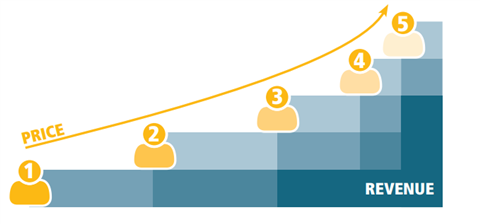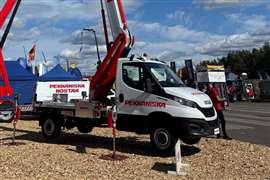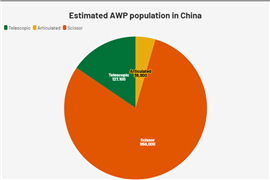Dynamic pricing in equipment rental
12 March 2019
Kevin Appleton considers the potential rewards and pitfalls of using pricing algorithms.
One of the big developments of recent years is the advent of “dynamic pricing”.
This is an approach developed in (amongst others) the airline industry, where technology allowed the relationship between supply and demand to be viewed in a much more “dynamic” way and where prices offered were varied accordingly.

Due to this way of thinking, we started to see more advantageous pricing for those who booked early and/or were regular users of a service, compared to those who were making “panic”, last minute purchases.
So, for airlines in particular, the use of more dynamic pricing allowed the revenue generated by each flight to be absolutely maximised according to the level of lifetime value represented by each customer, along with their relative “desperation” to fly on a given date or time.
Dynamic pricing systems in equipment rental
The same basic approach has been commercialised now into a number of price optimisation systems, probably the best known of which is called Zilliant.
Such systems have made their way into use in the rental industry, with United Rentals, amongst others, adopting dynamic pricing as a standard way of doing business.
The principle of dynamic pricing systems for rental takes a number of factors into account in a series of price-suggesting algorithms.
Customer spending capacity
The spend potential and previous pricing history of a customer would influence the starting point.
If this was a big customer, who has previously had low prices, then the system will suggest a pricing range designed to attract and retain (because it’s a customer with a high potential lifetime value).
If it’s a small, non-informed customer, then the suggested pricing would be set rather higher.
Rental fleet availability
Added to customer evaluation would be some fleet factors of the rental company, such as the level of availability of the equipment being priced at the point of customer enquiry.
If there is high availability then lower pricing would typically be offered to increase the likelihood of gaining the order.
Conversely, if the equipment type was almost out of stock then suggested pricing would be held at a higher level, on the basis that there may be some level of market shortage of this type of equipment.
Finally, the ease of the hire would have an influence on the price suggested by the system.
A short-term, short-notice rental would typically attract higher pricing than one which is for several weeks and can be fulfilled in a week’s time.
Algorithm complexity and set-up
The complexity of the algorithms which support these systems, along with how well these are constructed, is a big factor in the credibility of the suggested prices that are produced.
In general, the normal rule of life applies – the more time, effort and thought you put into segmenting and inputting the data that drives the decisions, then the more likely you will get better pricing outcomes.
However, doing this well is probably a six-month job for one or two of your brightest people and also assumes you collect extensive customer data through your systems in the first place.
Not all companies have either the intellectual capability, the systems or the time to devote to such an exercise.
The benefits of dynamic pricing
However, if this is done well and the system, therefore, is primed with good quality underlying data, then the prices proposed by such an engine are incredibly helpful in steering the pricing decisions of salespeople and customer service agents.
As an industry, we have a terrible habit of setting our prices on the basis of the last conversation with the last customer and not taking into account the value of the next customer, the scarcity of the equipment or the challenges of the rental itself.
A dynamic pricing engine changes all of that and ensures that the company representative is highly likely to be proposing the price which best fits with that customer’s situation.
Reported evidence from (amongst others) United Rentals, suggests that rates can be increased by several percentage points if you have a well-functioning dynamic pricing system.
All of that extra pricing translates into extra profit and, as such, payback on investments in pricing tools can be very short indeed.
There is always the risk that, over time, customers understand that they are unwilling participants in a pricing “game” and that can turn some people off.
The question for rental businesses to consider is whether that is a bigger risk than the risk of continuing to sell at prices lower than you might otherwise get.
Over to you!

About the author Kevin Appleton is an experienced senior executive and advisor in the equipment rental, logistics and construction service industries. He is a former CEO of Lavendon Group and a chairman and/or non-executive director of a number of companies in the rental and logistics sectors. To comment on these articles, e-mail: [email protected] |
STAY CONNECTED



Receive the information you need when you need it through our world-leading magazines, newsletters and daily briefings.
CONNECT WITH THE TEAM











